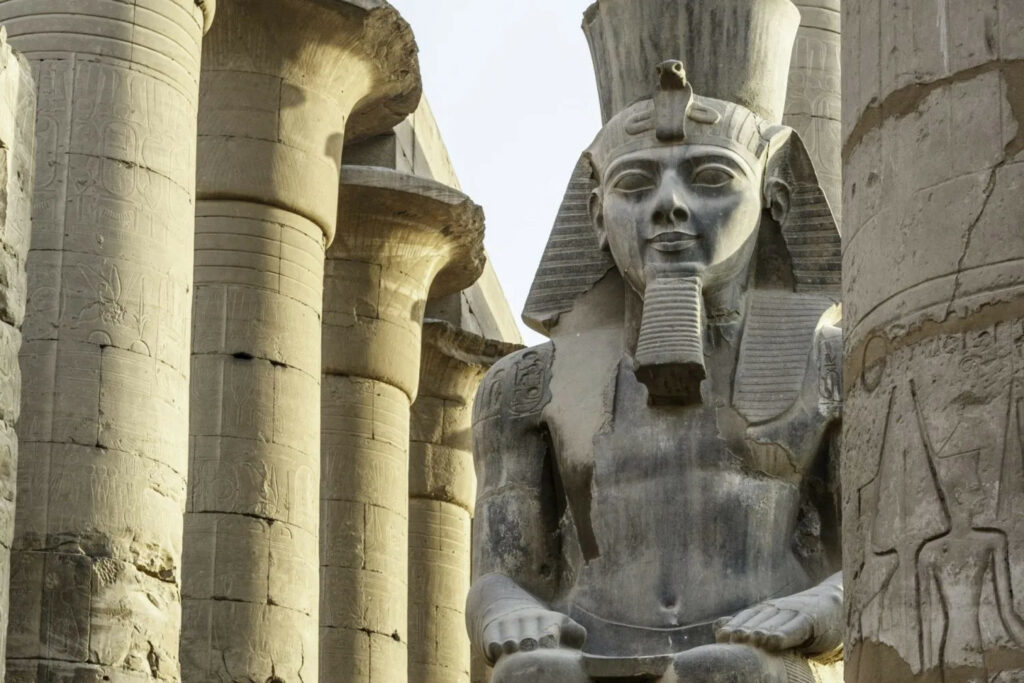A Testament to Egypt’s Glorious Past

In the heart of Luxor, where the Nile River gently flows, lies a testament to the grandeur and spiritual devotion of ancient Egypt — the magnificent Luxor Temple. Situated on the east bank of the Nile, in the modern-day city of Luxor, this ancient temple complex stands as a living legacy to the power and influence of pharaonic civilization.
Centuries of Construction and Devotion

Built over centuries by successive pharaohs, the Luxor Temple began its construction during the New Kingdom period, around 1400 BCE, although its completion and additions continued well into the Ptolemaic and Roman eras. Dedicated primarily to the Theban Triad of the god Amun, his consort Mut, and their son Khonsu, the temple served as a center of religious worship, political ceremonies, and royal rituals.
The Grandeur of the Temple Complex
Approaching the temple complex, visitors are greeted by a grand colonnade lined with towering pillars adorned with intricate hieroglyphs and relief carvings. These pillars, originally 14 meters high and topped with open lotus-bud capitals, once formed the processional pathway that led to the inner sanctum of the temple.

At the heart of Luxor Temple lies the Great Court, a vast open space surrounded by colossal statues of pharaohs and gods, including an imposing granite statue of Ramses II seated on his throne. The walls of the Great Court are adorned with scenes depicting the pharaohs’ victorious battles and their divine connections, underscoring their roles as intermediaries between gods and mortals.
Beyond the Great Court, the temple’s inner sanctum reveals the sacred spaces where priests performed daily rituals and where the divine presence of Amun was believed to reside. The innermost sanctum, or the Holy of Holies, housed the cult statue of the god, accessible only to the high priests during sacred ceremonies.
A Living Legacy

Throughout its history, Luxor Temple underwent various modifications and additions by different pharaohs and rulers, each leaving their mark on its architectural style and religious significance. The temple’s enduring beauty and spiritual aura continue to draw visitors from around the world, seeking to immerse themselves in the majesty of ancient Egypt’s religious and cultural heritage.

Today, Luxor Temple stands not only as a UNESCO World Heritage site but also as a symbol of Egypt’s enduring legacy and its contributions to human civilization. As the sun sets over the Nile, casting a golden glow upon the temple’s weathered stone, the echoes of ancient chants and rituals still resonate within its walls, reminding us of a time when gods walked among mortals and pharaohs ruled with divine authority.

